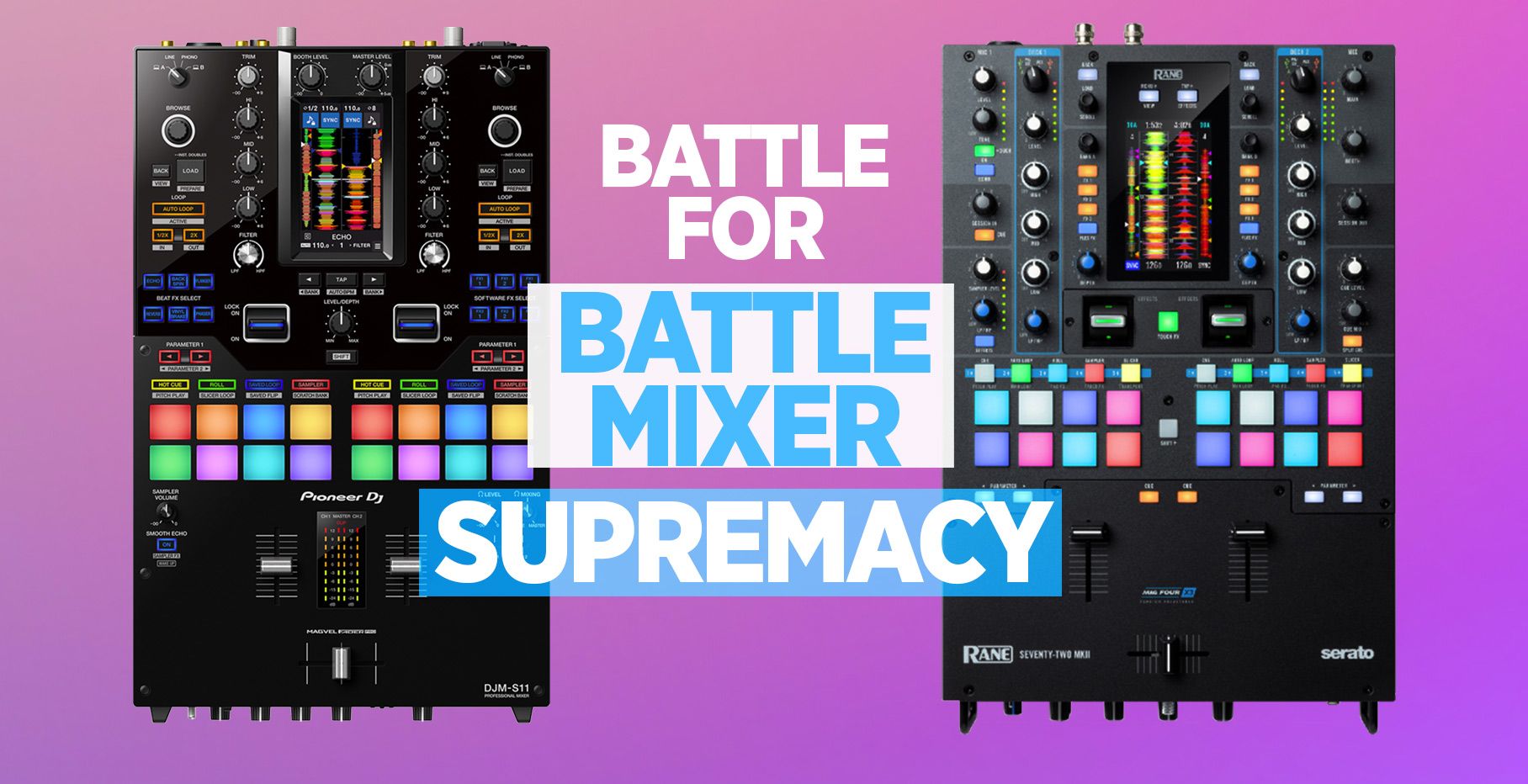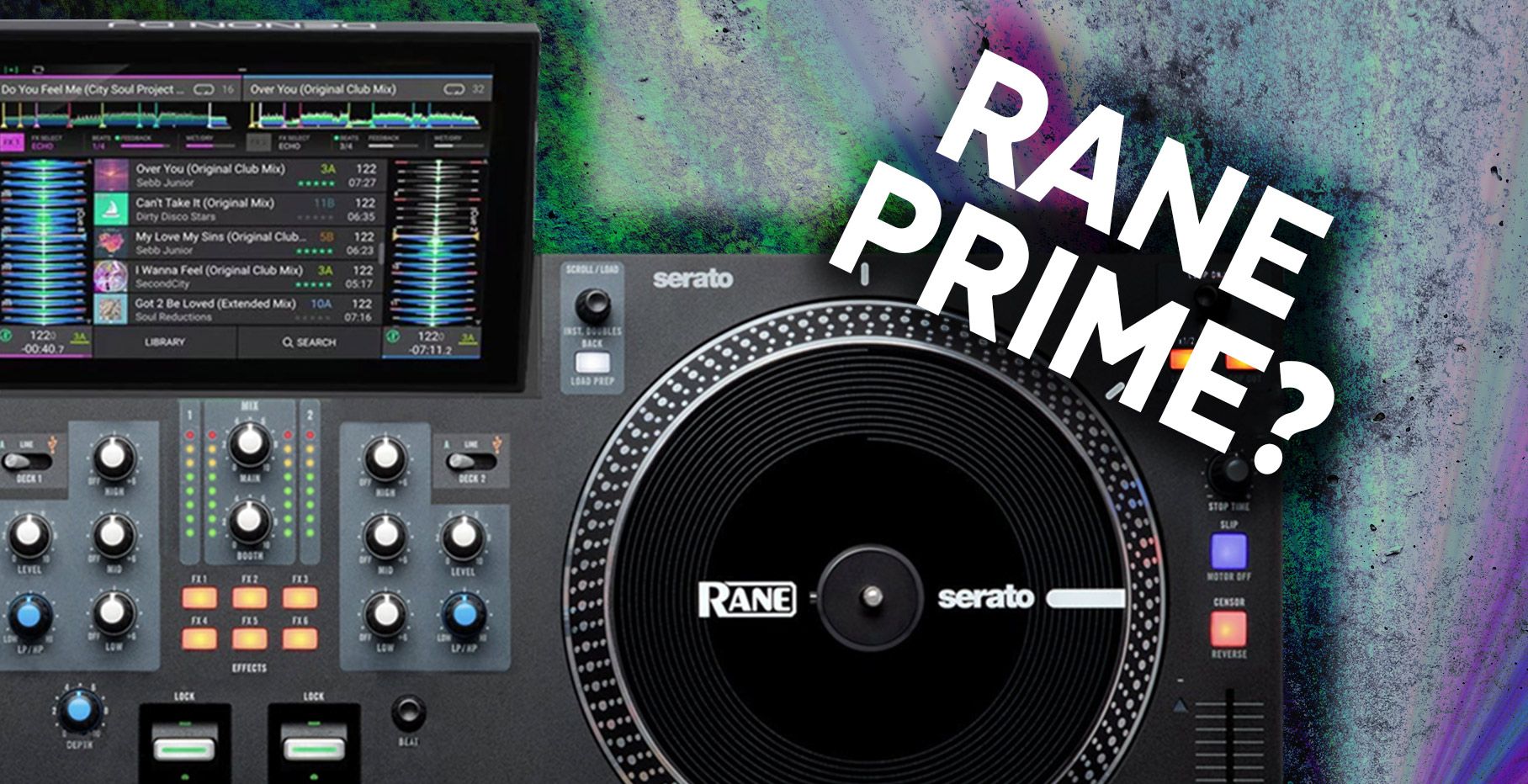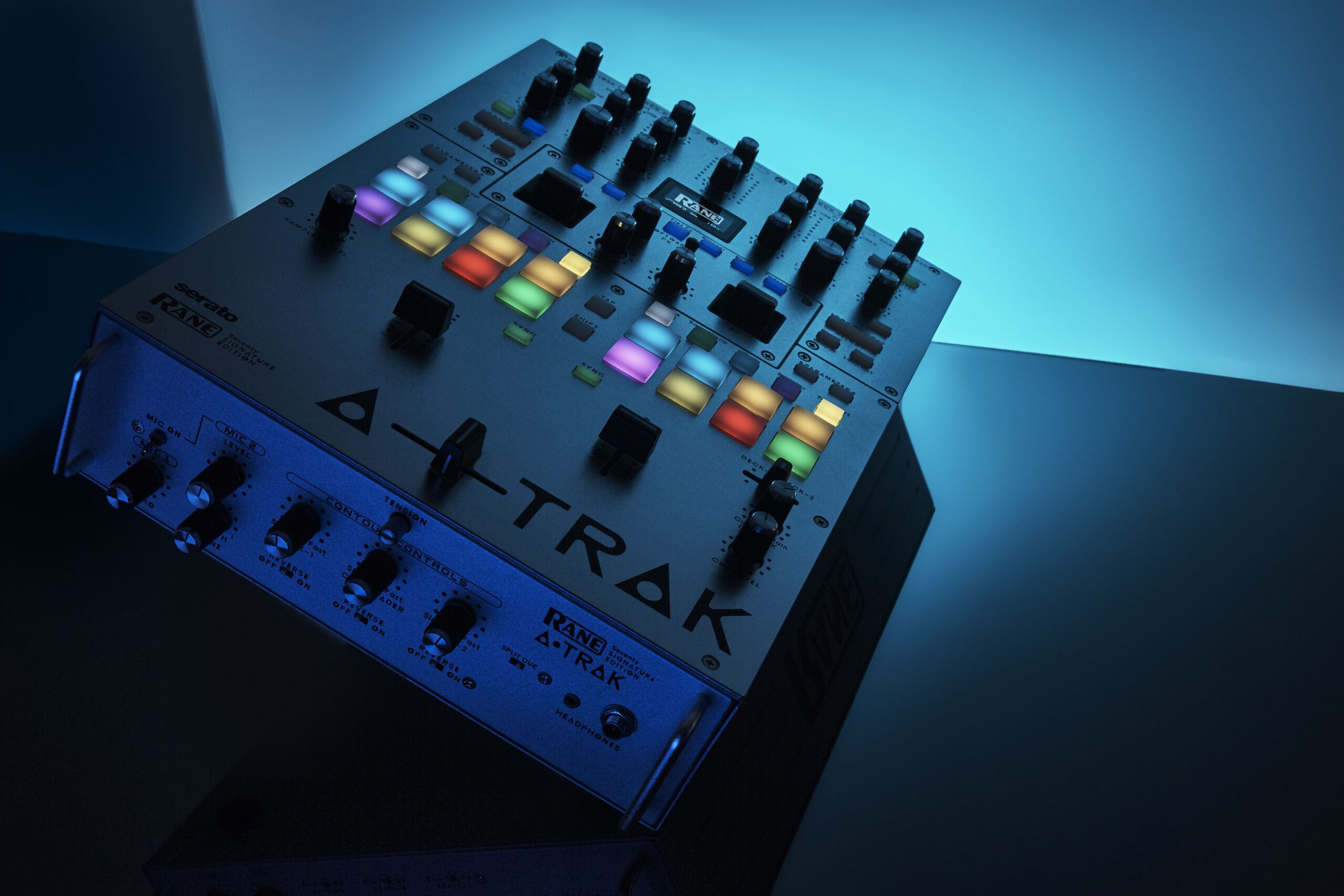Amid the dumpster fire that was 2020, we somehow saw the release of more high-end gear in a single year than I can remember. Between the Pioneer DJ DJM-V10, Denon SC6000 gear finally hitting store shelves, the Rane Seventy, the Pioneer DJ CDJ-3000s, and the Rane Twelve MK2s, there was a glut of professional – and costly – equipment in a year where many of us had zero gigs.
Among those releases, Rane released the Seventy-Two MK2 – a relatively minimal update to the original version released 2 years prior. Last October, Pioneer DJ introduced the DJM-S11. Thanks to some innovative new features like the Scratchbank, Smooth Echo, and 4-deck support, the DJM-S11 is currently the popular, new hotness of 2-channel scratch mixers.
These two mixers seem to be competing for the same space on the surface. At only a $100 difference in price (InMusic recently raised their prices for a number of their higher-end units), does the older design of the Seventy-Two MK2 still match up to the brand new DJM-S11?
Let’s have a look.
Layout
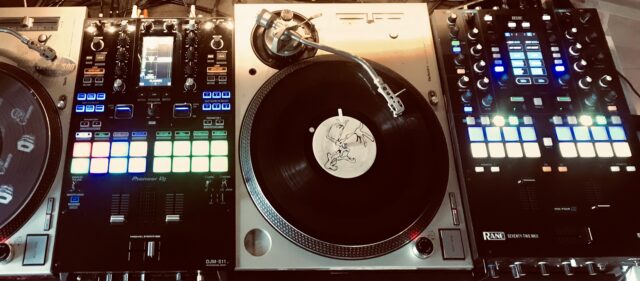
At first glance, these mixers seem quite similar. They both have two sets of 8 pads, a 4.3″ screen in the middle, dual effect paddles, and many shiny buttons that light up. They also both appear to be relatively symmetrical.
If you look a little closer, however, you can see the differences in design philosophy. The Rane Seventy-Two MK2 flanks the screen with several controls in addition to the EQs strip, while the DJM-S11 keeps the screen area relatively sparse with the EQs on either side. Further out, the Seventy-Two MK2 has more and more knobs, while on the DJM-S11, you encounter a more button-focused layout.
When I look at it side-by-side, the Rane Seventy-Two MK2 almost overdoes it with knobs vs. the more streamlined look of the DJM-S11.
All in all, I think the DJM-S11 has a cleaner layout compared to the more cluttered look of the Rane Seventy-Two MK2.
Winner: Pioneer DJ DJM-S11
Pads

The DJM-S11 pads are obviously larger, but I don’t think it makes a huge difference in capabilities. The pads definitely feel different, though. Rane pads tend to depress, whereas the Pioneer DJ pads remain static and don’t sink into the unit. Rane also opted to stick with these same rubber buttons for the page controls, while Pioneer DJ went with hard plastic. I didn’t have an issue with either, although some people might prefer one over the other.

In terms of functionality, the Rane Seventy-Two MK2 gives you 5 pages of controls per side with anywhere from 2-4 functions per page (including custom MIDI pages). In contrast, the DJM-S11 gives you four pages, each with four functions ( including custom midi pages). Each mixer has 16 pages of controls to choose from, although the DJM-S11 has a slight edge in ease of use: each page has exactly 4 options to choose from, whereas the Rane Seventy-Two MK2 has a different number depending on the page.
From a functionality perspective, the DJM-S11 offers a few more useful functions. The Cue Loop function is often cited as a dealbreaker for many when it is missing. While not as usable as the dedicated Silent Cue function on the Rane Seventy-Two MK2, Gated Cue is still very cool. The Seventy-Two MK2, on the other hand, offers a decent Pad FX section and the almost useless Fader FX section (I have never met a DJ that uses this function).
The DJM-S11 also has the split pad function, allowing one page for the top row and another page function for the bottom row. In addition, the DJM-S11 offers four pages for custom MIDI controls per side vs. the three on the Seventy-Two MK2
Winner: Pioneer DJ DJM-S11
Screen
One of the biggest complaints about the Seventy-Two MK2 has always been the low refresh rate of the screen, and I was very disappointed that they chose to stick with the same screen for the Seventy-Two MK2. Pioneer DJ responded with a much higher quality touchscreen that produces a better frame rate. The colours on the Pioneer DJ screen also look much brighter and easier to see than the more washed-out look of the waveforms on the Seventy-Two MK2. What is especially odd is that the Seventy-Two MK2 is fully capable of delivering bright, vivid colours. Look at how it performs with Virtual DJ.
Although the Rane Seventy-Two MK2 has multitouch while the DJM-S11 does not, its implementation is so sparse; it’s like it almost doesn’t even exist. That said, I do like being able to pinch to zoom the waveforms on the Seventy-Two MK2.
The only drawback I’ve seen to the DJM-S11 screen is it can become rather laggy and unresponsive when used with older laptops, whereas I’ve never encountered this issue with the Rane Seventy-Two MK2.
Winner: Pioneer DJ DJM-S11
EQs
I can tell you right away that I have never been a fan of Pioneer DJ’s EQs. Something about the crossover points never sounds right to me. The Rane EQs blend tracks better for me and sounds more musical to my ear. Take a listen to this comparison:
You can hear the DJM-S11 cuts making the tracks sound much thinner – especially with the bass.
Winner: Rane Seventy-Two MK2
Crossfader
The MagFour fader is excellent, don’t get me wrong – but there are a couple of quirks. One is that it requires some regular maintenance to keep it gliding and performing smoothly. Rane even includes some Deoxit Faderlube with every piece of gear that uses the MagFour faders. After about 13 years of owning Rane products, I am a little sick of the maintenance required of their faders. Another thing that bothers me about the fader is that it tends to “catch” or feel a little sticky when applying a little bit of lateral pressure. While it may not affect you at all, depending on your technique, it does for some of my cuts. I find it most noticeable on slices – so on cuts like boomerangs or swing flares, I can get thrown a little off by it.
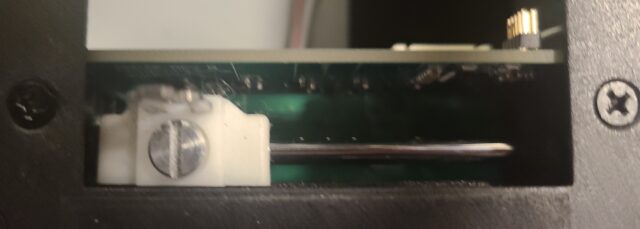
The DJM-S11’s Magvel Pro, on the other hand, is simply that much better. It’s consistent, dependable, light, and drama-free. It has a great feel to it, and I get why it’s the fader of choice for many high-level scratch DJs. Unlike the Rane, the fader utilizes a closed design making it less susceptible to dust or grit means it’s virtually maintenance-free.
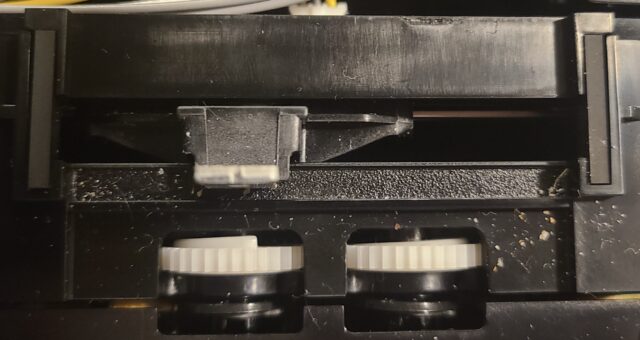
On top of that, the Magvel is capable of cutting a little tighter. You can reduce the cut lag to 0.3mm, whereas the Seventy-Two MK2 has a minimum of about 0.7 mm cut in. It’s not really a problem for me as I like a larger cut lag, but some prefer a super tight one.
Winner: Pioneer DJ DJM-S11
Upfaders
While I prefer the Magvel Pro crossfader, the same can’t be said of the cheaper upfaders on the DJM-S11. Rane – as they have with all their mixers – goes the extra mile and gives you the high-end, contactless MagFour faders for the line faders as well. This allows you to swap them interchangeably as well if you so desire. I wish Pioneer DJ would take a page out of Rane’s (and Reloop’s) playbook and offer high-quality faders for the upfaders as well.
Winner: Rane Seventy-Two MK2
Effects
Most of you probably already know who wins this. Take a look:
DJM-S11
If there’s one thing Pioneer knows how to do well, it’s the effects. It’s what brought them to the dance back in the 90s when they burst onto the scene with the DJM-500, and it’s what keeps them being one of the most popular mixer choices out there – club or scratch. The workflow is almost perfect on the DJM-S11. Relevant information is clearly visible on multiple screens, and the system is easy to figure out and completely intuitive. You can rapidly flip through effects – both hardware and software. You can customize different effect banks and access them easily. Everything is quick to access, and most of the effects sound great.
Seventy-Two MK2
The Seventy-Two MK2, on the other hand… isn’t. It’s been one of the most significant weaknesses of the mixer. The controls are convoluted, unwieldy, and kind of a pain to use. Switching effects is a particularly frustrating experience thanks to the over-reliance on a single encoder.
This single encoder controls 10 different options on the screen. If I want to switch effects, I have to tap the screen, click the button, twist the knob, click the button again, twist the knob again, click the button, then use the paddle. If I need to change the timing, I need to do even more. It takes all that to change an echo to a reverb.
On top of that, the dual depths are cumbersome, and the double BPM makes things more convoluted.
To make matters worse, all the software effects and effects routing reset upon shutting down the mixer and Serato so you always have to dial everything in again every session.
Effect Layering
Theoretically, you have an easier time layering of effects on the Seventy-Two MK2 over the DJM-S11. While you can layer effects on the DJM-S11, the interface requires you hold down a button while pressing others to trigger multiple effects. Two or three effects at once isn’t too bad, but trying to activate multiple software and hardware effects becomes a little difficult.
The Seventy-Two MK2 is much easier because the buttons function as latches and you can press them one at a time. In addition, you get two hardware effects engines as opposed to the single one on the DJM-S11. You can also assign effects to either side of the mixer, both, and even to the Sampler channel.
That said, the grand majority of DJs, are going to be using at most 2-3 effects simultaneously so I don’t think this ends up being much of an advantage for the Seventy-Two MK2.
Pad FX
The Pad effects on the Seventy-Two MK2 are alright, but I often forget that they are there. They add an additional suite of hardware effects at your fingertips, though.
Touch Effects
There are X-Y touch effects on both of the mixers, and while the Pioneer gives you an additional preset, they work about the same, with both being customizable. Granted, neither get much use out of me.
The Smooth Echo is so useful, I’m going to cover it in a separate section.
Winner: Pioneer DJ DJM-S11
Sound Quality
I have never been the biggest fan of how Pioneer DJ mixers sound. The DJM-S9 sounded harsh to me after extended listening; the DJM-900NXS has a similar, almost metallic quality to it. Their controllers also sound mediocre to my ear. But the DJM-S11 has improved by leaps and bounds. Gone is the shrill, high-end bump and the thinner lows, and instead, it’s a much more well-rounded sound with a comparatively neutral sound signature.
But man, the Rane sound is still my favourite. There’s a warmth, punchiness, and clarity to it that I could listen to for hours on end. I’ve been a fan of the “Rane sound” for decades now, and this current generation of Rane mixers is some of the best I’ve heard.
That said, the DJM-S11 is much closer these days than before, and if you don’t have a trained ear, it can take some careful listening in specific environments to hear the difference.
All this applies strictly to the digital and line-in signal for me. With the vinyl preamps, the Seventy-Two MK2 wins hands down. Vinyl sounds rich and fat on the Seventy-Two MK2, whereas it sounds “ok” on the DJM-S11. The preamps aren’t terrible like I find on some of the cheaper Pioneer DJ mixers or controllers, but they still don’t compare to the Rane ones. The DJM-S11 preamps have a bit too much of a mid presence to my tastes, and I feel they lack the clarity and fullness of the phono preamps on the Seventy-Two MK2.
Winner: Rane Seventy-Two MK2
Features

In November of last year, the DJM-S11 would have won this handily only because of the new Scratchbank feature. But now that the Seventy-Two MK2 has it, it closed the gap for me. The Scratchbank feature is a dream come true – one I’ve been waiting years for.

That said, only one of these mixers can utilize 4 decks – and has a decently intuitive control scheme to boot (but worth noting: I do still think it’s a little too complicated for most people). On top of that, consider the sheer amount of options available via the screen: effects, an array of extra controls (all MIDI mappable), layers of effects choices, and banks. This clearly gives the DJM-S11 the edge.
Winner: Pioneer DJ DJM-S11
Customization
The Seventy-Two MK2 offers decent customization features. You can adjust effect parameters to your liking, turn certain features on/off, choose what to assign certain buttons, and MIDI map some of the screen controls. There are also 3 pages of pads for custom mapping.
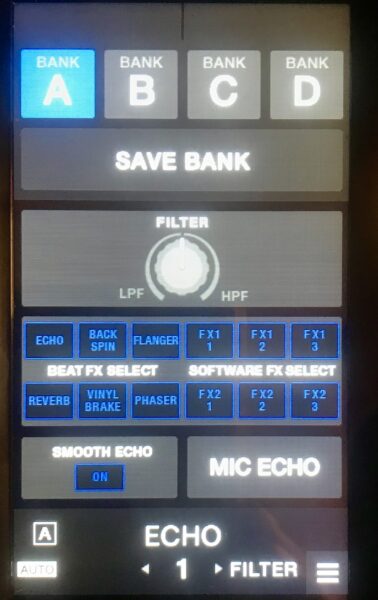
However, it pales in comparison to the sheer range of choices when it comes to the DJM-S11. Virtually everything is MIDI mappable – including the copious amounts of controls on the Touch MIDI screen. The effects have a staggering amount of customization – with so many different combinations available. You could spend hours tweaking things to the most optimal setting. There really is no comparison between the two.
Winner: Pioneer DJ DJM-S11
Build Quality
There’s no doubt that Pioneer DJ is proven in the field by now. Their gear easily has the highest number of installs for professional use. You go to a club or festival, and 9 out of 10 times, you’ll see Pioneer DJ gear first and foremost. That said, it is still very plastic, and it has that plastic feel to it.
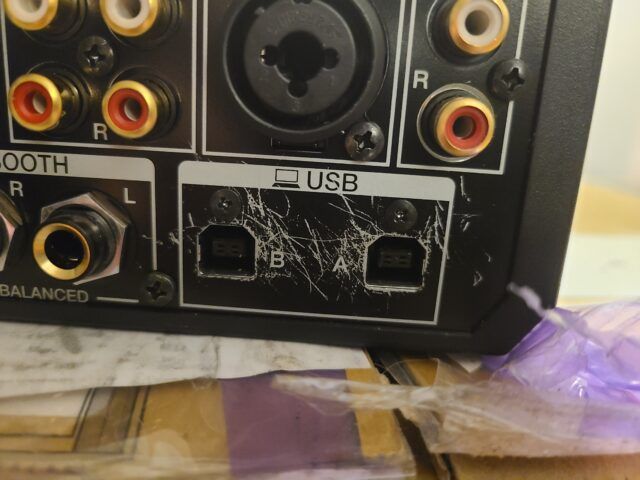
The Rane Seventy-Two MK2, on the other hand, feels like a tank. It’s solid steel, robust, and beefy as all hell. The finish on the Seventy-Two MK2 seems much superior to the DJM-S11. The paint on the DJM-S11 is particularly problematic, being easy to scratch and peel while the Seventy-Two MK2 looks almost impossible to scratch up. This was also an issue with the DJM-S9. I’m sure many of you own or have used a battle-scarred DJM-S9 with chunks of paint missing or rubbed off over the years.

But it’s not all one-sided. The pots on the Rane are still plastic vs. the sturdier, metal stems on the DJM-S11. The rubber bumpers at the front of the DJM-S11 are also much better than these metal frames on the Seventy-Two MK2. On the Seventy-Two MK2, I find they bend and warp if you lay it on its end too much.
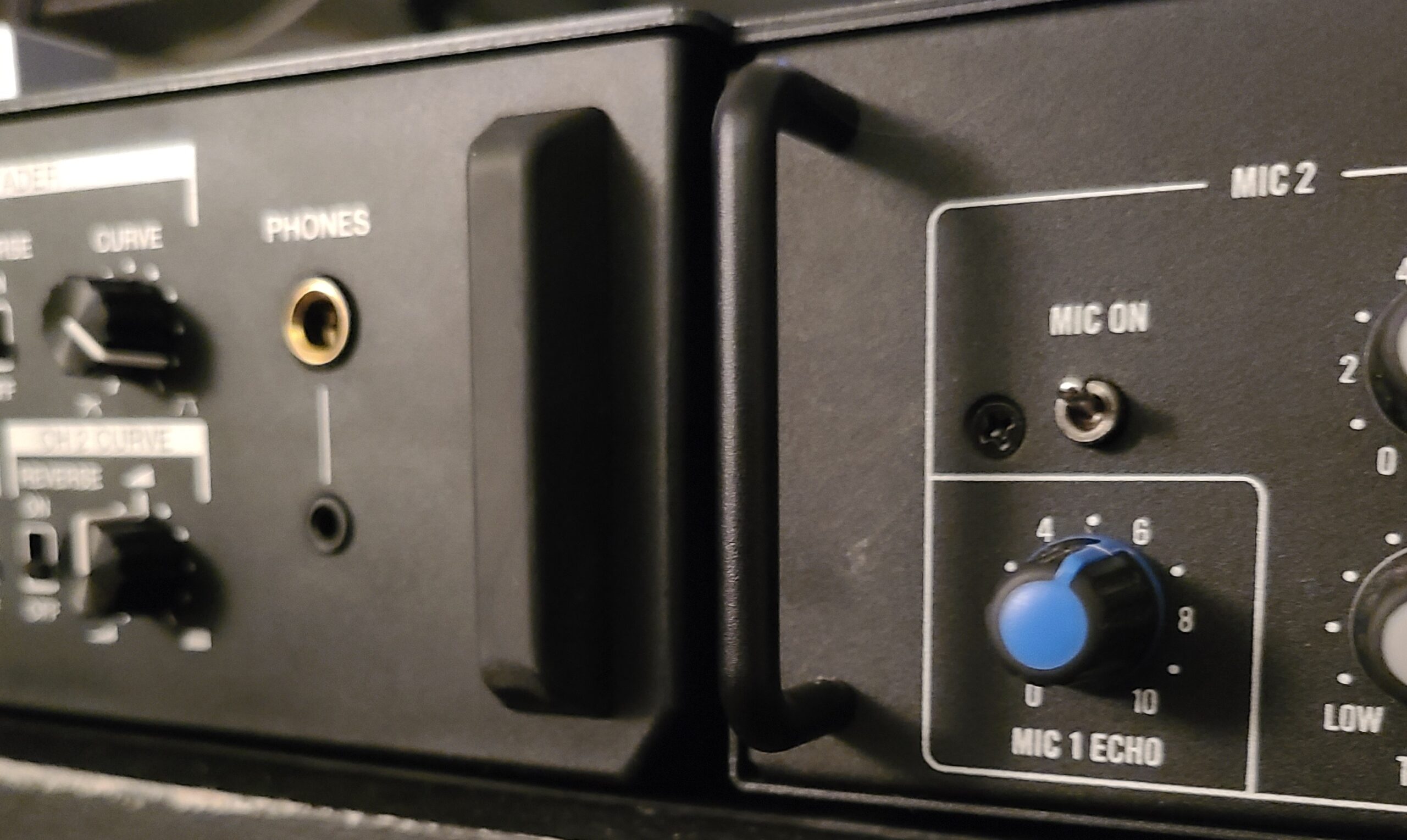
At the end of the day though, whenever I’m asked to choose between plastic and metal, the metal usually wins for me.
Winner: Rane Seventy-Two MK2
Inputs + Outputs
At first glance, the inputs and outputs of these mixers look quite similar. Both have 2 sets of RCA inputs per channel – 1 phono input for turntables and one line-in. You get all three connector types for outputs: XLR, 1/4″, and RCA on both mixers. They both have dual USB-B ports capable of connecting 2 computers, as well as a pair of USB-A ports for connecting CDJs, Rane Twelves, or extra controllers. Each mixer has an additional RCA input for auxiliary devices, and both sport a combo jack for a mic (although the Seventy-Two MK2 has a pair vs. the single on the DJM-S11).
But dig a little deeper, and the Seventy-Two MK2 starts to show its flexibility. The RCA phono inputs are switchable to Line, allowing for a greater variety of items plugged in. The mic inputs are likewise switchable to Line level allowing for things like live instruments, synths, drum machines, and the like to be connected. Having a pair of mic inputs is a nice perk as well. Another extra benefit: the AUX input on the Seventy-Two MK2 has a dedicated headphone cue button, which is ideal if you want to use it with a third deck.
Volume-wise, the Seventy-Two MK2 has independent volume knobs for all three outputs, while the DJ-S11 has the XLR and RCA outputs share the same volume.
I connect many different things into my DJ mixer, and I definitely missed the flexibility of inputs and outputs on the DJM-S11 vs. the Seventy-Two MK2.
Winner: Rane Seventy-Two MK2
The Lightning Round: smaller features worth noting
Let’s talk about a few of the little things worth comparing between the two mixers.
Mics
So obviously, the Seventy-Two MK2 should win because two is better than one, right? Probably, but there are some things the DJM-S11 does better. For one, the two-band EQ on the DJM-S11 is superior to the single-knob tone-controls on the Seventy-Two MK2. I also prefer the talkover auto-ducking on the DJM-S11 over the Seventy-Two MK2, as it’s smoother and less abrupt. Additional features like a built in high-pass and limiter on the mic channel definitely gives points to the DJM-S11 and its handling of the mic controls.
Still, though – 2 vs. 1 is hard to beat. And that’s not the only reason I’d pick the Seventy-Two MK2 here either. The mic controls on the faceplate is more ideal, in my opinion, than the front of the mixer. Level meters for the mic is a feature also sorely missing from the DJM-S11. And, of course, the mic inputs’ ability to flip to Line – as mentioned here – is a positive.
Winner: Rane Seventy-Two MK2
Sampler Routing
Both the Seventy-Two MK2 and the DJM-S11 can route the Serato Sampler to a separate channel. While both allow you to apply the effects to the sampler channel, the Seventy-Two MK2 also has a dedicated filter on the channel, which lets you do things like this:
I also prefer how the Seventy-Two MK2 has a dedicated effects button rather than the Shift button to enable effects like on the DJM-S11.
Winner: Rane Seventy-Two MK2
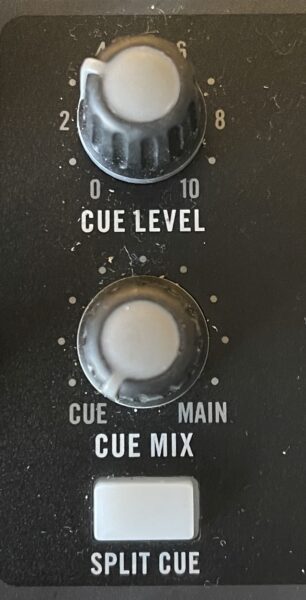
Headphone Cue
The DJM-S11 uses the cue fader system found on the DJM-S9 (as well as in the Rane 57, the DJM 909, and some older Vestax mixers). Comparatively, the Seventy-Two MK2 has the more widely used cue button system found on modern gear.
The cueing method is ultimately a personal preference, as I prefer cue buttons. Additionally, the DJM-S11 headphone cue is a little hotter in volume; the quieter headphone cue has been a common complaint of the Seventy-Two MK2.
The one thing that ultimately puts the Seventy-Two MK2 over the DJM-S11 for me is the Split Cue. This has been an almost essential feature lately, especially since I DJ more in my headphones than not. It’s definitely something I miss when playing on the DJM-S11.
Winner: Rane Seventy-Two MK2
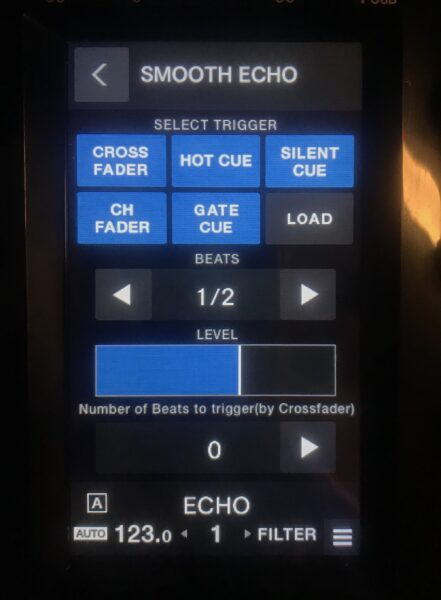
Smooth Echo
I love the DJM-S11 Smooth Echo. The closest thing on the Seventy-Two MK2 is the Duck Echo effect. While similar, it doesn’t come close to the customization and functionality of the Smooth Echo effect on the DJM-S11. Add to the fact that it is an entirely different effect rather than taking up one of the precious hardware effect slots, and this is one is a no-brainer.
Winner: Pioneer DJ DJM-S11
Ease of Use
On the surface, the DJM-S11 seems to be more straightforward for workflow and ease of use. And in many ways, it is. But once you dive into the screen functions, it’s easy to get overwhelmed and lost.
The Seventy-Two, on the other hand, looks initially very complicated – and again, it is. Once the muscle memory kicks in for the physical controls, the screen functions end up being reasonably simple in terms of choices – effects notwithstanding.
While the DJM-S11 does seem simpler on the surface, it also has an array of screens, sub-screens, and sub-menus to choose from, and it ends up being far more complicated than expected. The four-deck controls, in particular, are a little convoluted. In contrast, the Seventy-Two only has 2-3 screens, which ends up being a little more straightforward to navigate even if some crucial controls are only accessed one screen at a time.
The effects section is undoubtedly easier to navigate on the DJM-S11, though – likely the feature that people will use the most. So that gives the DJM-S11 the edge to me.
Winner: Pioneer DJ DJM-S11
USB-A Ports
While both mixers have a USB hub built-in to connect Twelves, CDJs, MIDI controllers, and other accessories, the DJM-S11 produces much more power output than the Seventy-Two. This allows the DJM-S11 to power bus-powered hard drives and Phase boxes, which isn’t possible on the Seventy-Two. Clearly, the DJM-S11 comes out on top with this one.
Winner: Pioneer DJ DJM-S11
Auto-Looping controls
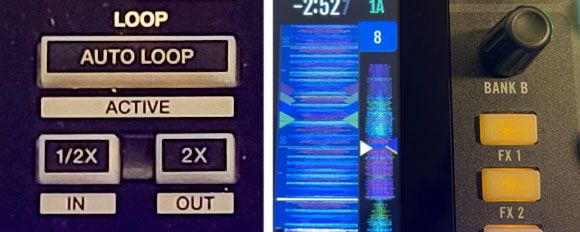
Yes, I understand that the doubling/halving button way of looping is the standard these days. Even Rane switched over to these controls with the Rane Seventy and the Rane ONE. But at the end of the day: I’m not a fan.
I’ve always hated the halving and doubling buttons. Here’s why: if you use the Beat Jump controls, your Loop Roll controls are reduced to 4 pads. And because the Loop Roll shares the same time increment as auto-loop, you’re stuck having to press the buttons a whole bunch of times if you like to switch between the optimal length. With the encoder found on the Seventy-Two, a good flick of the knob will get you from large increments for looping to small increments for loop roll with much less effort than buttons.
Winner: (for me) Rane Seventy-Two MK2
Tap Tempo

Pioneer DJ has the best tap tempo functionality in the game. They perfected it way back with the EFX-500, and it continues to shine today. There’s a smoothing algorithm applied which evens out your tapping, giving a consistently accurate BPM.
The tap tempo on the Rane Seventy-Two MK2, on the other hand, is not good. It seems to have a mind of its own, and an errant tap can completely ruin the BPMs. It’s challenging to get accurate tempos, and there’s no way to adjust it manually.
Winner: Pioneer DJ DJM-S11
Overall Winner
…us, as the customers

Alright, well – this is a total cop-out, but I couldn’t help it. I love playing on both these mixers for different reasons. When I first considered making a direct comparison, I was sure the DJM-S11 would come away as the clear winner due to the newer design, higher performance features, better crossfader, and better screen. But laying it all out, I was surprised by how much the Seventy-Two still competes despite its older design and some evident, problematic aspects.
The Pioneer DJ DJM-S11 is sleeker and more focused on the DJ as a performer. It opens up a host of new technical avenues to be creative in next-level ways, all in a slick-looking package. The Rane feels more like a classic piece of pro audio – functional, reliable, indestructible, and with lots of little perks that make it more flexible, even if they aren’t the sexiest features in the world.
The DJM-S11 will likely get the edge for most people due to the cleaner layout and more intuitive effects section. Pioneer DJ also had the opportunity to listen to the criticisms made of the Seventy-Two and address them in the newer DJM-S11. Being the new hotness doesn’t hurt either. That said, there are many key features on the Rane Seventy-Two MK2 that still draw me to the mixer. For me, it’s the Split Cue, the Inputs and Outputs, and the superior sound and build quality.
Picking based on my personal preference – and how you should do the same
At the end of the day, though, it depends on your preferences as a DJ: how you like to play, the type of gigs you’re interested in playing, and where your priorities lie. At a $100 price difference, I was initially ready to crown the DJM-S11 the winner – and at full price, it is probably the better buy – but the more I go back and forth between the two mixers, the more I start to realize that it is ultimately a personal preference.
I believe the DJM-S11 is better suited to a specialized turntablist/battle DJ. In contrast, the Seventy-Two MK2 has some more practical features that might appeal to the mobile DJ or someone who wants their DJ mixer to be the centrepiece of their studio.
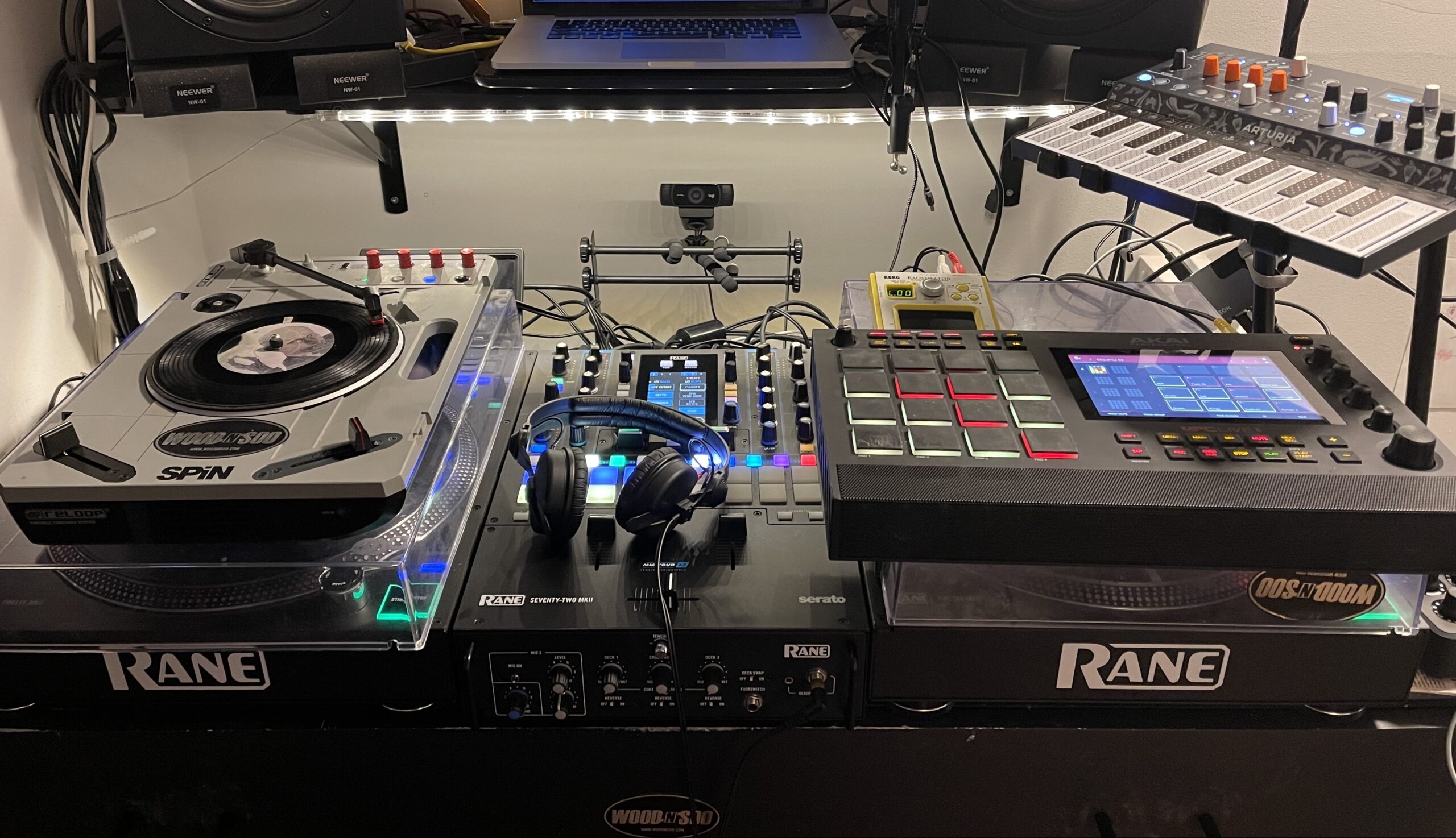
Competition is great for us
I’m not being cliche in saying that we, as the buyers, are the winners here. This is what happens when you have a competitive market. In the standalone media player world, the innovative and feature-rich Denon DJ players are still trying to claw their way into installs and riders – despite arguably being better players (and better value) than the CDJ 3000s. The 2-channel scratch mixer market, however, is wide open.
Here are two major companies with deep pockets competing with – and trying to one-up – each other. It’s incredible for us as consumers, and the fire lit beneath each of these companies makes for an exciting future ahead. Between the DJM-S11 and Seventy-Two MK2, in addition to the DJM-S7 and Seventy, there is quite the renaissance in two-channel scratch mixers. You can also throw the Reloop Elite into the mix, and the Numark Scratch offers an additional, solid, entry-level choice. Add in the potential for consistent feature upgrades via firmware (take Rane getting Scratchbank, for example), and it’s a fantastic time to be on the hunt for a two-channel scratch mixer.
Because these companies are trying their best to outdo each other, we are offered so much choice at competitive price points.
I love it.
Now, if only I could use this gear at gigs again…

